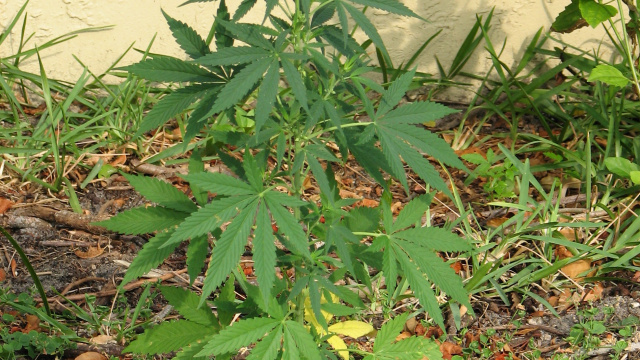 Tin foil on the windows, children’s toys that never seem to move from their spot in the front yard and neighbours who don’t seem to live in the home they own.
Tin foil on the windows, children’s toys that never seem to move from their spot in the front yard and neighbours who don’t seem to live in the home they own.
These are just some of the signs of a marijuana grow operation residents should look out for in their neighbourhood, police repeatedly warn.
According to a 2007 Royal Canadian Mounted Police report on drug offences, 60% of offences related to marijuana production occurred in a residence.
And an Ipsos Reid study in 2012 – prompted by the Ontario Real Estate Association – said almost a quarter of Ontario residents have “seen or know of homes in their neighbourhood that have been used as a marijuana grow operation.”
No one wants to live in a mouldy ex-drug lab. A past history of drug production can lower a property’s value for years by 15-20%, and make home insurance a pain to maintain.
That’s why Markham realtor Cathy Innamorato did not buy a grow-op home, despite the fact that it had been remediated, leaving little concern for mould.
A conversation with her insurance company left her walking away from the home, she said, because she ran the risk of increasing premiums in the future.
“And you have no recourse,” Innamorato said. “So because of that I decided against purchasing this property.”
Despite remediation – the process of eradicating mould and other damage done to a building following it’s use for illicit drugs – a grow house never truly shakes its drug-related stigma, she added. Remediation reports often don’t guarantee the home’s condition 100% and insurance companies are reluctant to accept them.
“How is the buyer protected?” Innamorato said.
A central grow-op registry would have all grow-op houses listed, making it easier for realtors to be open and for buyers to be confident of their purchase.
The Ontario Real Estate Association repeated its call for the registry in early March, supporting Nepean-Carleton MPP Lisa MacLeod’s recently tabled Clandestine Drug Operation Prevention Act.
“I think that there’s an appetite to protect our community and also crack down on this illicit activity,” MacLeod said.
The theft of hydro is a major related concern, as house grow-ops steal energy by rewiring, often risking electrical safety.
MacLeod said law-abiding customers wind up footing the bill for dollars lost to hydro theft.
“It’s quite significant, its a cost to our communities,” she said.
One man has made stigmatized properties his personal mission.
Barry Lebow, a GTA realtor and an expert in real estate stigma, said grow-ops can become long-lasting problems for homeowners and landlords when they try and sell their property in the future.
“Do you realize how many houses are stigmatized in this province?” Lebow said. “Because the law is that there’s no such thing as a statute of limitations on stigma in Ontario. It has to be reported forever.”
While he makes it clear he dislikes stigmatizing properties for housing as few as three or four marijuana plants – therefore causing no damage done to the home – he agrees a central registry disclosing grow-op homes ruined by organized criminal behaviour can help realtors and buyers.
“Where there’s been a professional criminal organization, that’s where I draw the line,” Lebow said. “We have to quantify what they did to the house.”
There should be a difference between a home where a person has grown pot for recreational uses without touching the structure, and a home that has to be gutted after a massive grow operation, Lebow said. Because the two aren’t the same.
“Therefore you have a problem on your hands because you’re stigmatizing people for something that really shouldn’t be stigmatized,” he said.
Lebow said he knows the impact of grow-ops on property owners. He’s heard many stories of landlords who have returned to find tenants have ruined their investment homes by running grow-ops. They take a huge loss of up to 20% in property value.
“Most of the houses that I’ve come across … have been hardcore blue-collar people who have bought a house, put all their money in, and find out that they’ve got a 20% loss in value across the board,” Lebow said. “Nobody can afford it but these people ( can afford the loss ) even less.”
Source: Sudbury Star (CN ON)
Contact: http://www.thesudburystar.com/letters
Copyright: 2013 Osprey Media
Website: http://www.thesudburystar.com
Author: Maryam Shah



Leave a Reply